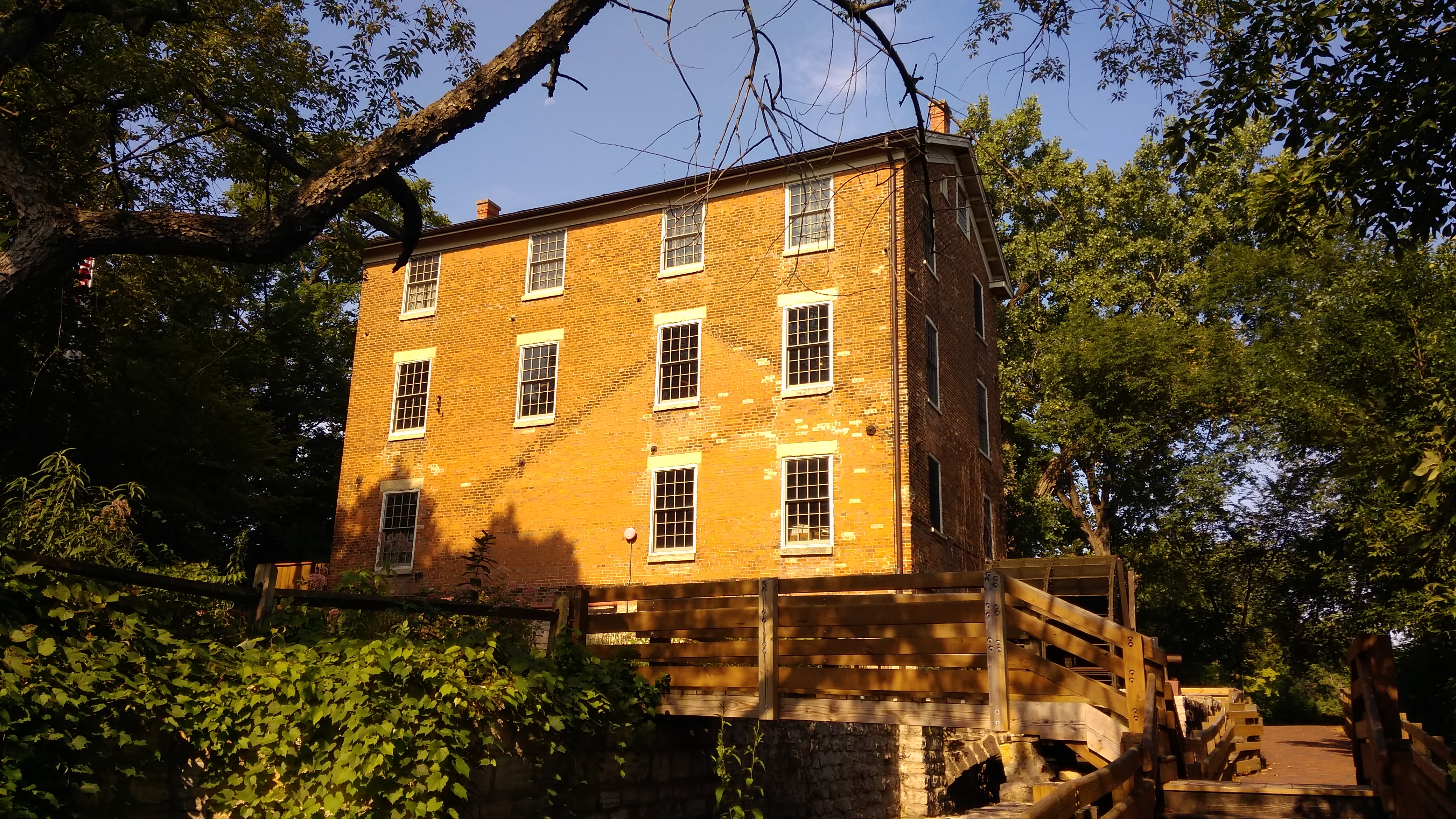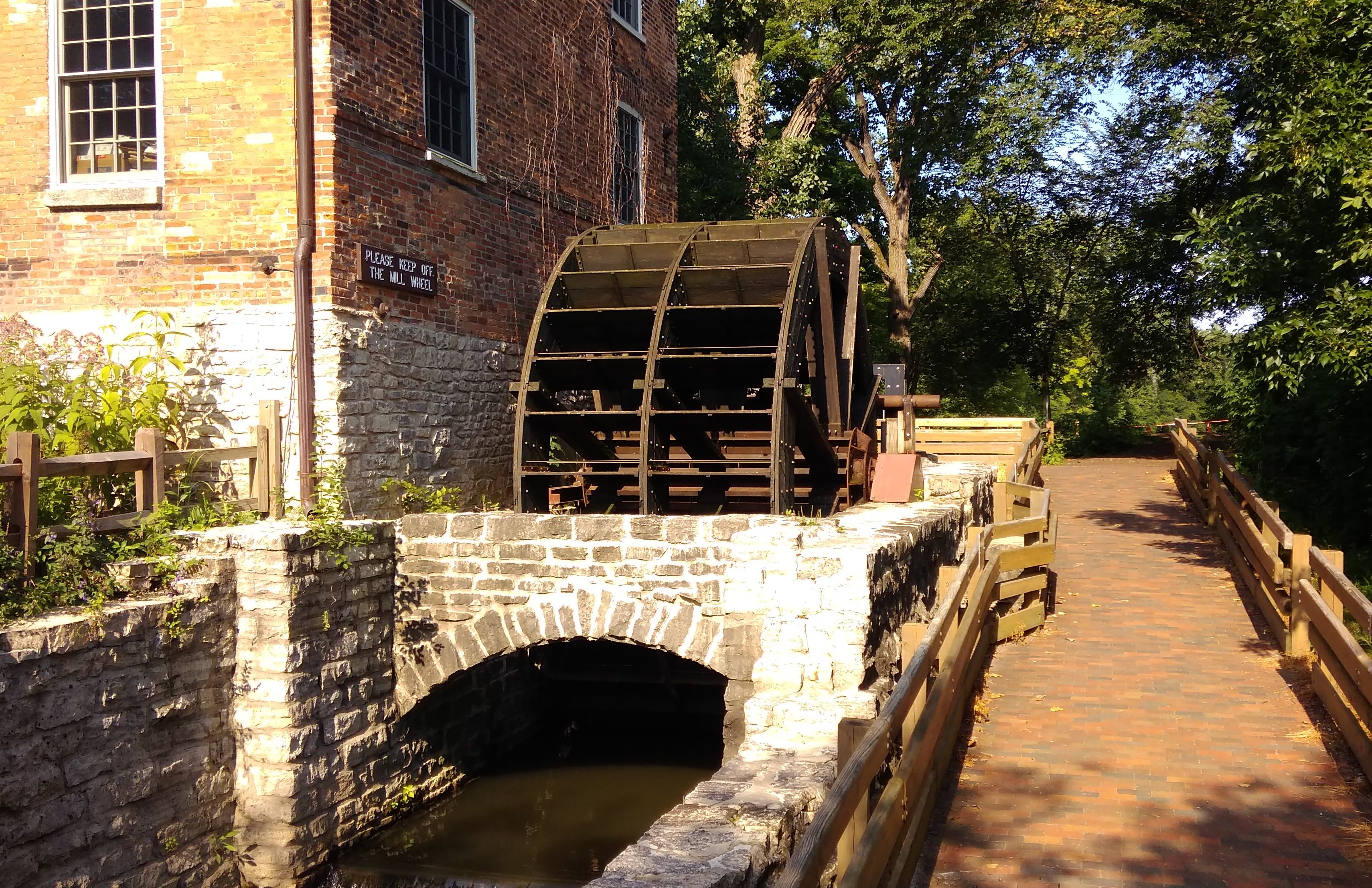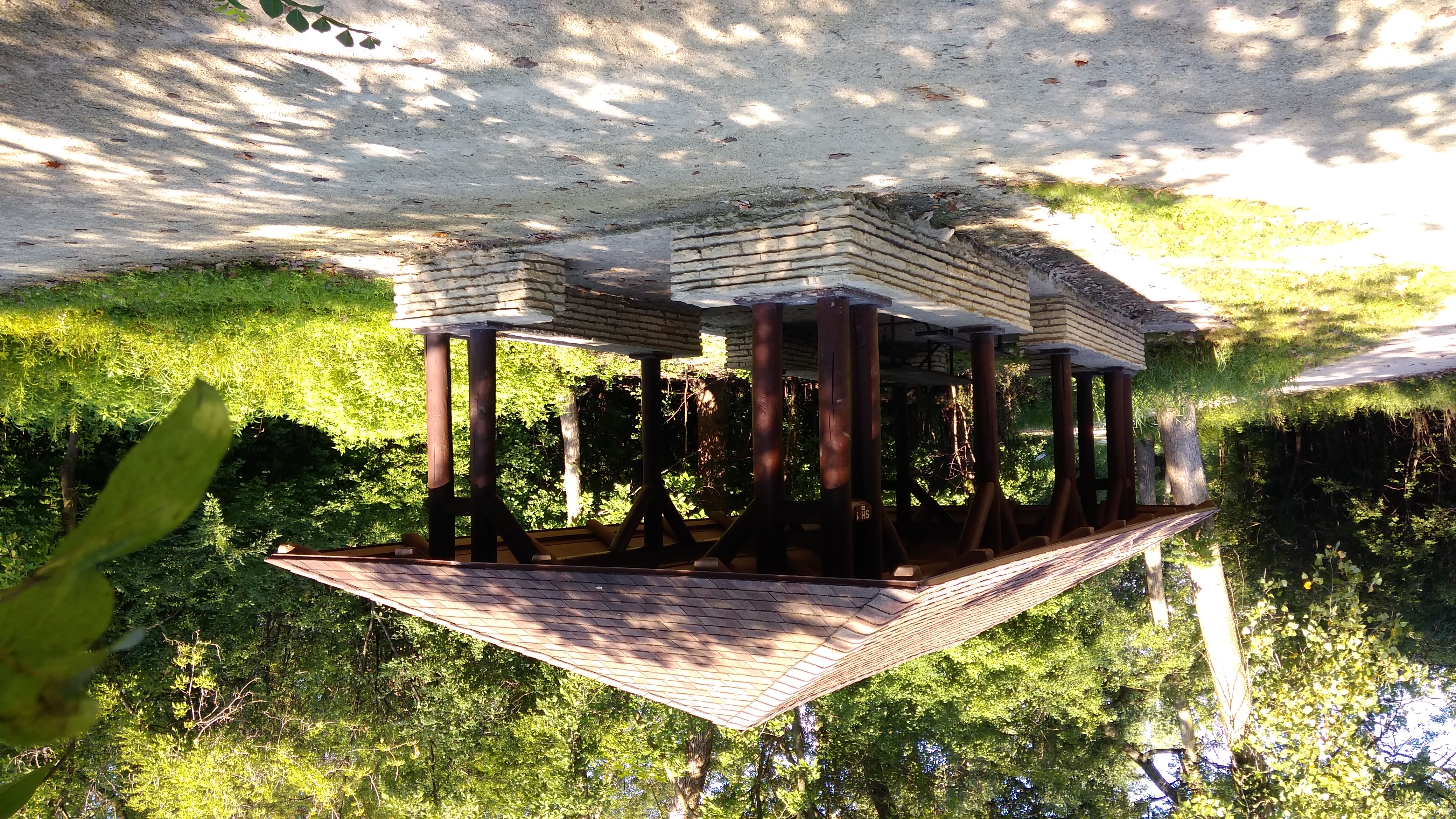Not long ago I was passing through the western suburbs, not too far from where I lived — and it feels a little strange to put it this way — around the turn of the century. Since I had a little extra time, I decided on a whim to visit the Graue Mill and Museum.
Re-visit it. The last time I was there, I remember pushing one of my daughters in a stroller. I don’t remember which one. In either case, that was a while ago. Around the turn of the century.
Graue Mill is a water-powered grist mill on Salt Creek in DuPage County, dating from the 1850s. The machinery inside is elaborate, restored to operation, and still grinding small quantities of grain that the museum sells. I didn’t go inside this time, but pondered the handsome exterior of the mill.
 As well as its large water wheel.
As well as its large water wheel.
 “Frederick Graue was born in Germany, came to the United States and settled in Fullersburg, Illinois, in 1842,” the museum’s web site says. In 1849, he purchased the site of a sawmill that had burned down, along with his partner William Asche, and constructed a gristmill there. Asche later sold his share to Graue.
“Frederick Graue was born in Germany, came to the United States and settled in Fullersburg, Illinois, in 1842,” the museum’s web site says. In 1849, he purchased the site of a sawmill that had burned down, along with his partner William Asche, and constructed a gristmill there. Asche later sold his share to Graue.
“Limestone for the basement walls was quarried near Lemont; bricks for the rest of the walls were made from clay from the Graue farm and fired in kilns near the mill site; flooring, beams, and posts were from white oak timbers cut along the I&M canal. The four one-ton buhrstones used for grinding were imported from France. After the gristmill opened in April 1852, it ground wheat, corn and other grains produced by local farmers.
“The mill was a major center of economic life during the 19th century and was also used by Fred Graue to hide runaway slaves on their journey to freedom in Canada.”
In the 20th century, the now-obsolete mill fell into ruin, but it was restored in the 1930s by none other than the CCC. Specifically, Troop V-1668, made up of veterans. These days, the mill is part of the Fullersburg Woods Forest Preserve, which is a unit of the DuPage County Forest Preserve District. The village of Fullersburg, for its part, was never incorporated and doesn’t exist as a modern entity.
This is Salt Creek next to the mill, which gives it its power.
 Salt Creek, despite its name, is really more of a river in this part of DuPage County, but never mind. It joins the Des Plaines River in Cook County, which later joins the Illinois and then of course the Mississippi.
Salt Creek, despite its name, is really more of a river in this part of DuPage County, but never mind. It joins the Des Plaines River in Cook County, which later joins the Illinois and then of course the Mississippi.
I had time enough to take a stroll on one of the paths through Fullersburg Woods Forest Preserve, not too far from the mill.
 Along the way, the path takes you past other views of Salt Creek, slightly upstream from the mill.
Along the way, the path takes you past other views of Salt Creek, slightly upstream from the mill.

 Past summer fields. The years do go by like so many summer fields.
Past summer fields. The years do go by like so many summer fields.

 And a handful of well-maintained CCC structures.
And a handful of well-maintained CCC structures.
 Though I didn’t capture any of the activity with my camera, the paths of Fullersburg Woods are very popular with dog walkers and their dogs.
Though I didn’t capture any of the activity with my camera, the paths of Fullersburg Woods are very popular with dog walkers and their dogs.
Asche ist ein guter Name für einen Mann, der niederbrannt ist.